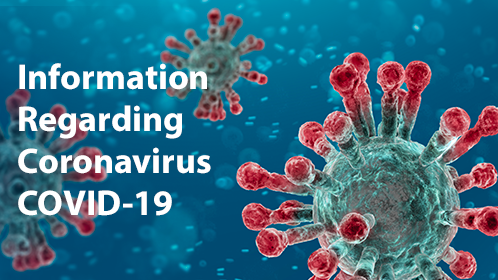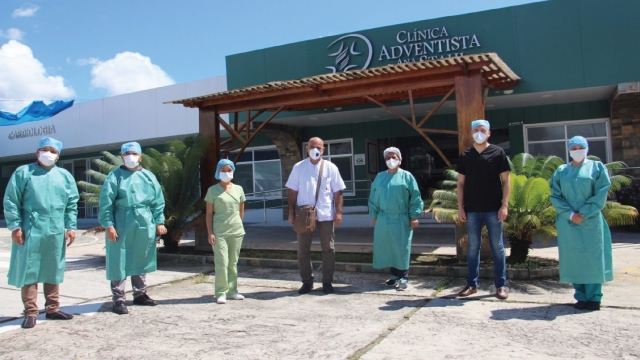Denver, Colorado … Adventist Risk Management released Information Regarding Coronavirus COVID-19. We would like to share it with our Rocky Mountain Conference pastors and congregations. “This is relevant information how to react to a situation which does concern all of us. As we meet with each other, go about our daily lives, organize church worship and events throughout our Conference, we would like all of us to be aware and act wisely,” says Ed Barnett, RMC president.
“Let us commit ourselves and the communities in which we live in prayer and engage in preventing as much as we can what is looming in the world today,” he adds.
The following information deals with precautions and prevention. As this is a “fluid” situation, availability of tests will likely increase information of new cases of the virus. Some of the details about the COVID-19 spread change daily.
Background Information
COVID-19 was discovered in December 2019 in the city of Wuhan, Hubei Province, China. It is an aggressive respiratory infection that is believed to be transmitted through droplet spread when infected people cough or sneeze. The virus can gain access to the body through the respiratory tract, mainly through the nose and mouth. Symptoms are similar to the common influenza strain and include fever, cough, muscle pain, shortness of breath, and fatigue.
Initially isolated to mainland China, the World Health Organization (WHO) is reporting for the first time that there are more new cases being discovered outside China than from within China.[1] As of their March 1 report, the WHO is reporting 87,137 confirmed cases, with only 7,169 of those outside of China.[2]
In the United States, The Centers for Disease Control and Prevention (CDC) is reporting 494 presumptive positive cases of COVID-19, meaning they have tested positive by a public health laboratory and are pending confirmation by the CDC. This includes at least 2 cases of where the virus was contracted by individuals with no relevant travel history.[3] The first death due to COVID-19 in the United States was reported in Washington State on February 29[4].
Precaution and Prevention
Using good hygiene practices can further reduce the risk of contracting COVID-19. Here are some simple preventative measures you can take:
- If you are symptomatic (fever, coughing, sneezing, body aches, etc.) do not go out in public where you can infect others. The common influenza/flu virus is also very active right now and has killed more people already this year than COVID-19. If you’re sick, stay home!
- Frequently wash hands with soap and warm water, scrubbing hands for at least 20 seconds. Alcohol-based hand sanitizer may also be effective.
- Follow proper etiquette when sneezing or coughing. Sneeze and cough into your elbow rather than your hand to avoid spreading the germs.
- Consider using a mask when traveling or in public areas. Masks should especially be used if you are coughing or sneezing frequently.
- Maintain at least 3 feet (1 meter) between yourself and other people in public, if possible. Avoid close contact with those who cough or are sneezing.
- Avoid touching/rubbing your eyes, nose and mouth, especially in public places where germs are easily spread.
- If you develop a cough or experience changes in your breathing, see your primary care physician as soon as possible. Be prepared share your travel history with the doctor.
- Avoid open markets and direct contact with animals/animal products
- Use careful food-safety practices (cook food thoroughly, wash produce well, use only pasteurized milk, etc.).
Resources
This is an ongoing situation that is evolving quickly. For updated information regarding the spread of the virus and travel advisories please consult the following resources:
World Health Organization – Coronavirus Disease 2019 (COVID-19) Outbreak
Centers for Disease Control and Prevention – Coronavirus Disease 2019 (COVID-19)
International SOS – Coronavirus Disease 2019 (COVID-19) Outbreak
U.S. State Department – Current Outbreak of Coronavirus Disease (COVID-19)
[1] World Health Organization, Coronavirus Situation Report #37. February 26, 2020. https://www.who.int/docs/default-source/coronaviruse/situation-reports/20200226-sitrep-37-covid-19.pdf?sfvrsn=2146841e_2
[2] World Health Organization, Coronavirus Situation Report #41, March 1, 2020. https://www.who.int/docs/default-source/coronaviruse/situation-reports/20200301-sitrep-41-covid-19.pdf?sfvrsn=6768306d_2
[3] Centers for Disease Control and Prevention, Coronavirus Disease 2019 (COVID-19) in the U.S. February 29, 2020. https://www.cdc.gov/coronavirus/2019-ncov/cases-in-us.html
[4] Centers for Disease Control and Prevention, Coronavirus Disease 2019 (COVID-19) Situation Summary. February 29, 2020. https://www.cdc.gov/coronavirus/2019-nCoV/summary.html




